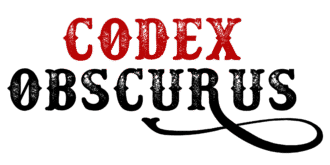
Selling ebooks online has never been easier… or more crowded. You’re competing with millions of titles on Amazon, limited control on Apple Books, and a royalty structure that often feels like you’re working for someone else.
That’s why more authors and digital creators are turning to Gumroad, a direct-to-consumer platform that gives you full control over your content, pricing, and audience.
I’ve used Gumroad alongside Amazon KDP, Shopify, and Etsy. And when it comes to digital freedom and low friction, Gumroad stands out.
You can upload your book in minutes, choose your own price, and start selling the same day. No need to wait for approval or meet rigid formatting rules. You set the terms, keep more of your earnings, and talk directly to your buyers.
That level of control isn’t something you get on most platforms. I’ve seen authors use Gumroad to launch poetry collections, fiction bundles, writing courses, and even audiobook packages, all without worrying about royalty splits or delivery fees.
There’s also the flexibility to test new ideas. Want to try a “pay-what-you-want” pricing model? Gumroad lets you. Thinking about bundling your book with a video tutorial or printable workbook?
You can set that up easily. For creators who like experimenting, selling books on Gumroad gives you the tools to move fast and adapt based on what your audience actually wants.
Can you sell books on Gumroad?
Yes, you absolutely can. Gumroad was built for creators selling digital products, and ebooks fit perfectly into that ecosystem. Whether you’re an indie fiction author, a coach with a PDF workbook, or a poet experimenting with self-publishing, Gumroad welcomes all formats and genres.
You’re not jumping through hoops to get approved. No ISBN is required. No formatting restrictions like Kindle’s .mobi headaches. Upload your file, set your price, and you’re live.
You can publish short stories, full-length novels, workbooks, anthologies, or even writing prompts, anything that can be packaged into a downloadable file. I’ve seen authors offer preorders for unfinished books and deliver updated versions later, all within Gumroad’s system.
That kind of flexibility makes it easier to experiment without needing to commit to massive production costs upfront.
Gumroad is especially powerful for authors who already have a small audience on Instagram, YouTube, Substack, or even Reddit. You won’t rely on an algorithm to push your work. Instead, you own the relationship with your readers from day one.
That means when someone buys your ebook, you get their email address. You can follow up with thank-you notes, bonus downloads, or even promote your next book launch.
In my experience, that direct connection makes all the difference. It helps you build a real reader base, not just numbers on a dashboard, but people who’ve actually read your work and are more likely to buy again.
What types and formats of books can you sell on Gumroad?
You can sell ebooks in just about every major format:
- PDF: Great for guides, workbooks, zines, artbooks, and formatted nonfiction.
- ePub: Ideal for reflowable text like fiction or self-help.
- Mobi: Useful if you want to accommodate older Kindle users.
- MP3 or ZIP: For audiobooks and narrated content.
Digital products aren’t the only thing you can offer. Physical books can be listed on Gumroad too, as long as you’re prepared to handle shipping, packaging, and customer support.
Some authors even offer signed paperbacks as a premium tier or add-on, creating a more personal buying experience for their audience.
You can also create bundles that feel more like digital experiences than just downloads. For example, some authors include bonus PDFs, exclusive author Q&A recordings, or worksheets that go along with the book.
Others turn their ebook into an audiobook companion set and sell both as a ZIP file. You can even include desktop wallpapers, mobile lock screens, or printable posters, anything that complements your book and adds value.
A polished offer and a warm audience can take you further than any algorithm.
In my case, I packaged my horror novel as a PDF, ePub, and a bonus “deleted scenes” booklet in a ZIP file. That bundle outperformed my Amazon KDP listing by 3x in profit per sale. I didn’t need to rely on volume.
One sale on Gumroad made more than three sales on Amazon. That kind of return gave me the confidence to reinvest in better cover art, run more targeted email promos, and grow my reader list with every launch.
What genres of books sell on Gumroad?
Certain categories tend to sell better, especially when paired with a niche audience or strong community:
- Business and marketing playbooks
- Self-help, wellness, and productivity guides
- Freelance or creator economy books (e.g., How to Sell Art on Instagram)
- Coding and tech tutorials
- Poetry collections and indie fiction with unique angles
- Visual or illustrated books like zines and sketchbooks
Books that speak directly to a specific need, hobby, or pain point usually perform better. A simple 50-page guide on how to build a Notion template or pitch brands on Instagram can outsell a 400-page novel if it solves a problem that people are actively trying to fix.
Readers on Gumroad are often creators themselves. They’re hungry for actionable insights, motivation, and resources they can use in real life. It’s less about writing what’s “popular” and more about writing what your audience craves.
I’ve seen poetry books do surprisingly well too, especially when paired with digital art or offered in limited-time bundles. Some creators include voice recordings of themselves reading the poems, turning the ebook into a full experience.
As Sahil Lavingia, Gumroad’s founder, once said, “Niche audiences are the future. Ten true fans can pay your rent; ten thousand followers might not.”
That quote stuck with me. It helped me shift my thinking from trying to please everyone to serving a focused group of readers deeply. Once I started doing that, my sales picked up, and so did the replies in my inbox from people saying, “I needed this.”
How does Gumroad differ from other publishing platforms?
Gumroad isn’t trying to be Amazon. And that’s the point.
You’re not stepping into a massive marketplace where your book gets buried in a sea of titles and algorithms. Instead, Gumroad gives you a direct path from your product to your buyer. No filters. No gatekeepers. And no waiting for approval.
Platforms like Amazon KDP or Draft2Digital offer broad distribution but demand trade-offs. KDP, for instance, asks for 90-day exclusivity if you want to join Kindle Unlimited.
That limits your ability to publish anywhere else. Gumroad imposes zero restrictions. You can publish and sell wherever you like, with no contracts, no gatekeepers, and no listing fees.
You’re in control from the start. You set your pricing, create custom product pages, and even build in upsells, bundles, or memberships. Want to offer a workbook alongside your ebook?
Gumroad makes that easy. Want to create a limited-time coupon code or test different versions of your landing page? You don’t need a plugin or a third-party tool. Those options are built in.
Here’s how it stacks up:
Feature Gumroad Amazon KDP Draft2Digital
Own customer emails Yes No No
Platform fees 10% (free plan) Up to 65% royalty cut Varies
Print-on-demand No Yes Yes
Marketplace visibility No Yes Yes
Upsells & bundles Yes No No
Selling books on Gumroad gives you full ownership of your business. When someone buys your book, you get their name and email address.
That connection allows you to follow up, build a relationship, and even pitch your next release directly. You’re not just making a sale. You’re building an audience you can reach again and again.
In my experience, that kind of access is rare. On KDP, I never know who buys my books. I can’t email them, thank them, or ask for feedback.
On Gumroad, I’ve had readers reply to their download email with questions, kind words, and even requests for more content. That kind of dialogue shapes how I write my next book and how I market it, too.

Pros and Cons of Selling on the Platform
Selling on Gumroad comes with some real perks, and a few responsibilities, too. Before you upload your ebook and hit publish, it’s worth understanding both sides of the platform.
Here’s a quick breakdown of the pros and cons of selling books on Gumroad, based on my own experience and what’s worked for other indie authors.
Pros:
- You keep your customer data and can build an email list
- No upfront costs to list your book
- Instant global reach with no middleman
- You can experiment with pricing, discounts, and “pay-what-you-want” models
- Supports affiliates, memberships, and recurring sales
Getting access to your customer data is a big deal. You know who bought your book, where they came from, and how to reach them again.
That means you can build an actual email list filled with people who’ve already said yes to your work. It’s easier to launch your next book, share a freebie, or offer a bundle when you’re not starting from zero every time.
You can start with nothing but a finished ebook and still make your first sale the same day. There are no listing fees, no setup costs, and no contracts tying you down.
Want to test two different price points? Go for it. Want to offer your book for free for 24 hours and see what happens? You can do that too. Gumroad’s flexibility makes it easy to experiment and adjust based on real-world feedback.
Creators also have the option to turn on affiliate programs or offer memberships. That opens the door to passive income and recurring revenue.
Some authors give paying members early access to new chapters or behind-the-scenes updates. Others let affiliates promote their books for a cut of the sale, essentially crowdsourcing their marketing.
Cons:
- You’re fully responsible for your own traffic
- No built-in marketplace to generate discoverability
- File sharing risks (especially with PDFs)
- You must handle your own customer support
You’ll need to bring your own audience. There’s no algorithm that magically surfaces your book to thousands of readers. This can be frustrating at first, especially if you’re used to platforms like Amazon that bring in passive traffic.
But over time, owning your audience means you’re not at the mercy of platform changes or unpredictable rankings.
File security can also be a concern. PDFs are easy to share or reupload elsewhere. Gumroad offers limited tools like license keys and download limits, but there’s always some risk involved. It helps to watermark your files or offer formats like ePub that require ebook readers.
Customer support is entirely in your hands. You’ll be the one replying to refund requests, download issues, or confused buyers who forgot their login. The good news? You can use automated emails, FAQ pages, and templates to keep things manageable as your sales grow.
Despite the cons, the benefits of selling directly through Gumroad often outweigh the downsides, especially when you’re building a long-term brand.
You’re investing in your independence as a creator. You’re setting yourself up to sell more than just a single ebook. You’re building the foundation for a digital storefront that grows with you.
How much does it cost to sell on Gumroad?
Gumroad keeps things simple:
- Free plan: 10% fee per sale + standard payment processing fees
- Creator Plan ($10/month): 3.5% + $0.30 per sale (Stripe/PayPal fees), with more customization and lower transaction fees
You don’t need to sink money into monthly subscriptions just to get started. On the free plan, Gumroad only takes a cut when you make a sale.
That makes it easy to test your ebook idea without feeling pressured to earn back startup costs. You can launch your book today, make a few sales this week, and upgrade to the Creator Plan when you’re ready to scale.
You can upload your book in minutes, choose your own price, and start selling the same day.
Let’s break it down. On a $20 ebook using the free plan, you keep around $18 after fees. That’s already strong. But on the Creator Plan, you keep even more, closer to $19. For authors who expect to sell regularly, that small monthly fee pays for itself quickly.
For comparison, Amazon KDP might pay you $7 to $14 for the same $20 sale, depending on the buyer’s location, delivery fees, and royalty rate. Gumroad’s model puts more money in your pocket with fewer hoops to jump through.
There are no hidden charges, no listing fees, and no forced upgrades. You’re not locked into anything. You pay as you earn.
I started with the free plan to test the waters and switched to the Creator Plan once I saw consistent monthly sales. That extra 6.5% I saved on each transaction made a real difference, especially during launch weeks.
Dos and don’ts of selling books on Gumroad
Selling books on Gumroad is simple, but success takes more than uploading a file and hoping for the best. Small mistakes can cost you sales, while a few smart moves can boost your earnings fast. Here are the key dos and don’ts to keep your offer sharp, your readers happy, and your sales steady.
Do:
- Design a clean, eye-catching cover
- Write a compelling product description with keywords like “ebook,” “guide,” or “PDF download”
- Build an email list and nurture it through content
- Use Gumroad’s analytics to improve pricing and marketing strategy
Your book cover is your storefront. It’s the first thing people see, and it shapes their decision in seconds. Even if you’re selling a PDF guide, it still needs to look like something people want to buy.
I’ve tested covers with and without pro design, and the difference in conversion was night and day. A bold title, clear subtitle, and professional layout go a long way.
Your product description matters too. Use clear keywords, like “ebook,” “digital guide,” or “PDF download,” so buyers know exactly what they’re getting.
Focus on the benefit, not just the content. What problem does it solve? What experience does it create? Add bullet points to highlight key features if needed, and always include the format and file size for clarity.
Email marketing plays a huge role in success on Gumroad. Collect emails through freebies, waitlists, or landing pages before launch. Then follow up with useful content and product updates. You don’t need a massive list, just an engaged one.
Gumroad gives you solid analytics, so use them. Track where your sales are coming from, which emails convert best, and how different price points perform. These insights help you improve each launch and turn a single product into a repeatable process.
Don’t:
- Publish without proofreading or formatting properly
- Skip the product preview; buyers want a sample
- Set it and forget it. Promote consistently through content, emails, and social media
- Underestimate the power of bundling (books + checklists + video content)
A messy ebook makes people ask for refunds. Readers notice typos, clunky formatting, or missing pages. Take time to polish your file. Use readable fonts, consistent spacing, and clean headers. A smooth reading experience builds trust and increases the chance of repeat buyers.
Offer a preview. Even a short sample can increase conversions. Gumroad makes it easy to add a preview file. Use that space to hook your reader and make them curious about what’s next.
Selling books on Gumroad requires consistency. Sales usually spike when you talk about your book, not when you quietly list it. Post excerpts, run promos, collaborate with creators in your niche, stay visible.
Bundling is another smart move. Combine your ebook with bonus checklists, printable pages, or short video lessons. It adds value and allows you to raise the price without adding hours of work.
My first successful bundle included a short guide, a workbook, and a private video link. That $7 product earned more than my $2.99 standalone ebook on other platforms.
A polished offer and a warm audience can take you further than any algorithm. You’re not guessing. You’re building something that grows with every launch.

What is the success rate of selling books on Gumroad?
There’s no official number for success rates on Gumroad. That’s because success depends entirely on you. Unlike Amazon, where thousands of random shoppers might stumble upon your listing, Gumroad puts the spotlight on your marketing.
Success on Gumroad starts with how well you know your audience and how clearly you can offer them something they want. It’s not about trying to please everyone. It’s about solving one specific problem or delivering one specific experience and doing it well.
Niche creators tend to perform better here because they speak directly to people who are ready to buy.
In my own experience, I’ve sold more ebooks from one strong email campaign than I did in a month on Amazon. I didn’t have a massive list, either, just a few hundred people who had already shown interest in my writing.
That one email brought in over $500 in 48 hours. I’ve never had results like that from simply listing a book on a crowded marketplace.
Some creators have made over six figures with digital books. A popular case is Alex Hormozi, who made $100,000 in ebook sales in under a year by combining value-driven content with Gumroad’s direct model.
He promoted his ebook through podcasts, Twitter threads, and email, all leading straight to a simple Gumroad page that converted like crazy.
The secret? A great book, a warm audience, and consistency. According to ConvertKit’s 2024 Creator Survey, email converts 7x better than social media for ebook sales.
That stat alone explains why so many authors see Gumroad as more than just a place to sell. It becomes part of their long-term strategy, a tool that helps them build trust, gather feedback, and sell directly without waiting for permission or praying for visibility.
How do I make $500 a day selling ebooks online and how can you too?
You don’t need a viral hit. You need a solid funnel.
Making $500 a day with ebooks isn’t about chasing overnight fame. It’s about building a system that works while you sleep.
That means knowing exactly who your book is for, how to reach them, and how to guide them through the buying process without friction. Once you set that up, every sale becomes a natural result of your strategy, not a lucky break.
Here’s a rough breakdown:
- 50 ebooks at $10 each = $500
- 10 premium bundles at $50 = $500
- 5 coaching upsells attached to an ebook = $500
There are different ways to hit that number, depending on how you price your product and structure your offer. Some creators focus on volume with lower-priced ebooks.
Others offer higher-ticket packages with extras like templates, video lessons, or consulting sessions. Gumroad makes it easy to test both approaches with different price points and bundle options.
To hit that kind of revenue, focus on:
- Creating a high-value product that solves a specific problem or entertains in a way that feels personal
- Building a lead magnet like a free mini-ebook or worksheet to grow your email list fast
- Running limited-time offers to create urgency and boost conversions
- Using Gumroad’s affiliate system to bring in new buyers through other creators in your niche
I reached $500 days by bundling a short ebook with a resource pack and offering it at $29. I promoted it to a list of 3,000 people and saw an open rate of 38% and a conversion rate of 4%.
That’s over $1,000 in sales from a single email. No paid ads, no big launch event, just a focused offer and a warm list that trusted me enough to click.
You can build that kind of system too. Start with one great product and a clear offer. Use Gumroad’s tools to experiment, refine, and repeat. Success doesn’t happen overnight, but Gumroad gives you the tools to make it possible, one sale at a time.
More Tips for Selling Ebooks on Gumroad Successfully
Take control of your creative business. Selling ebooks on Gumroad lets you skip the gatekeepers, keep more of your earnings, and build a real relationship with your readers. You’re not waiting around for a publisher or praying an algorithm favors your book.
You’re in charge.
This platform gives you room to experiment, whether you’re launching a niche guide, repurposing old blog posts into a bundle, or turning your email course into a downloadable PDF.
Books that speak directly to a specific need, hobby, or pain point usually perform better.
You’re free to try things, adjust your pricing, update your product page, and talk directly to your buyers. That freedom makes it easier to grow a real business instead of hoping for exposure from a crowded marketplace.
In my opinion, Gumroad is the smartest move you can make if you’re serious about owning your platform. Sure, it requires effort. You’ll need to create content, build trust, and promote consistently.
But every sale feels earned, and every dollar feels worth it. I’ve made more meaningful progress selling ebooks on Gumroad than I ever did relying on platforms that keep me at arm’s length from my readers.
No permission needed. Just publish, promote, and profit. The tools are simple, the process is clear, and the results are yours to build on. You don’t need to be famous. You just need to be consistent and willing to treat your books like the products they are.




